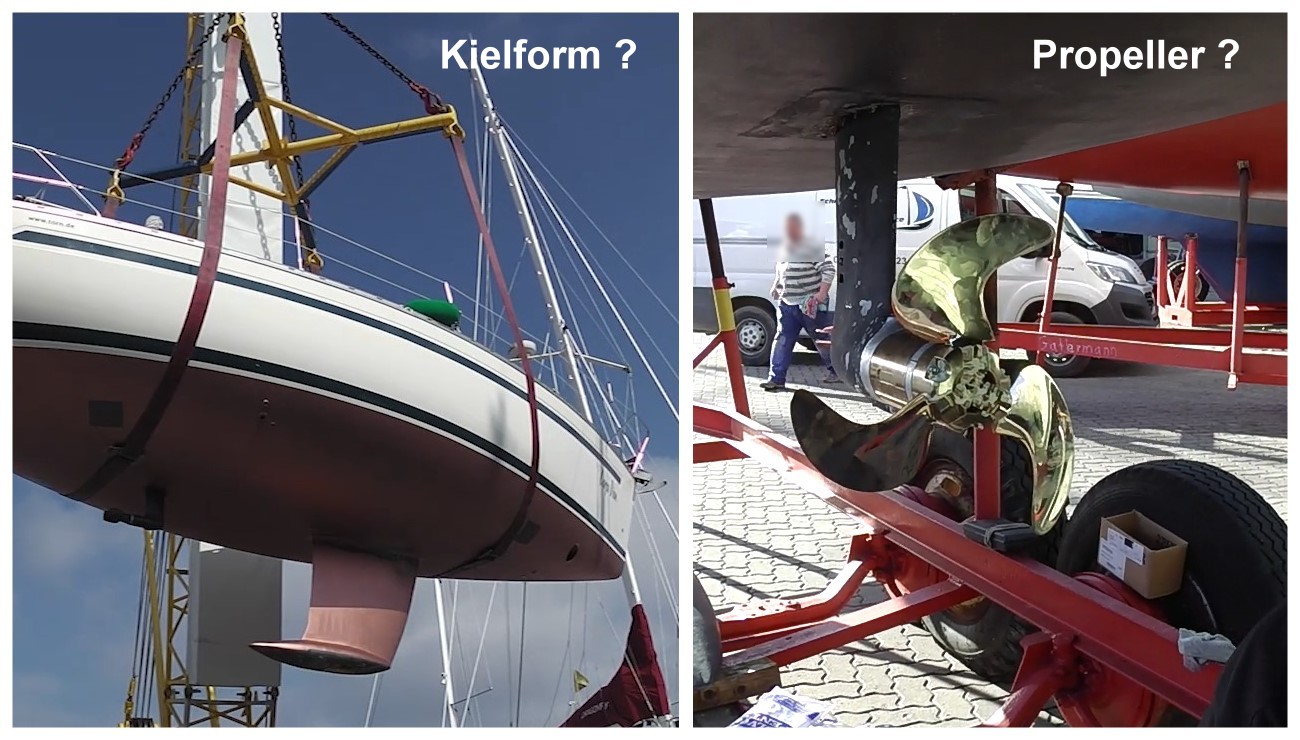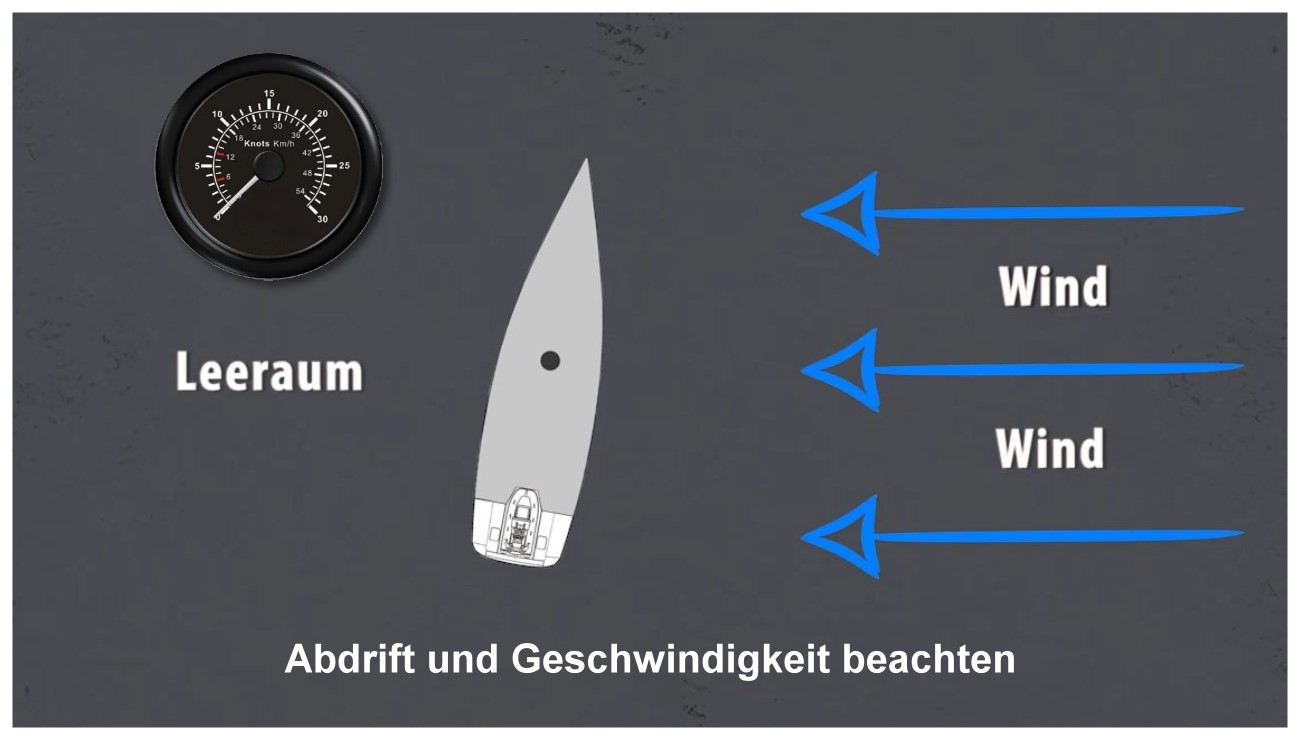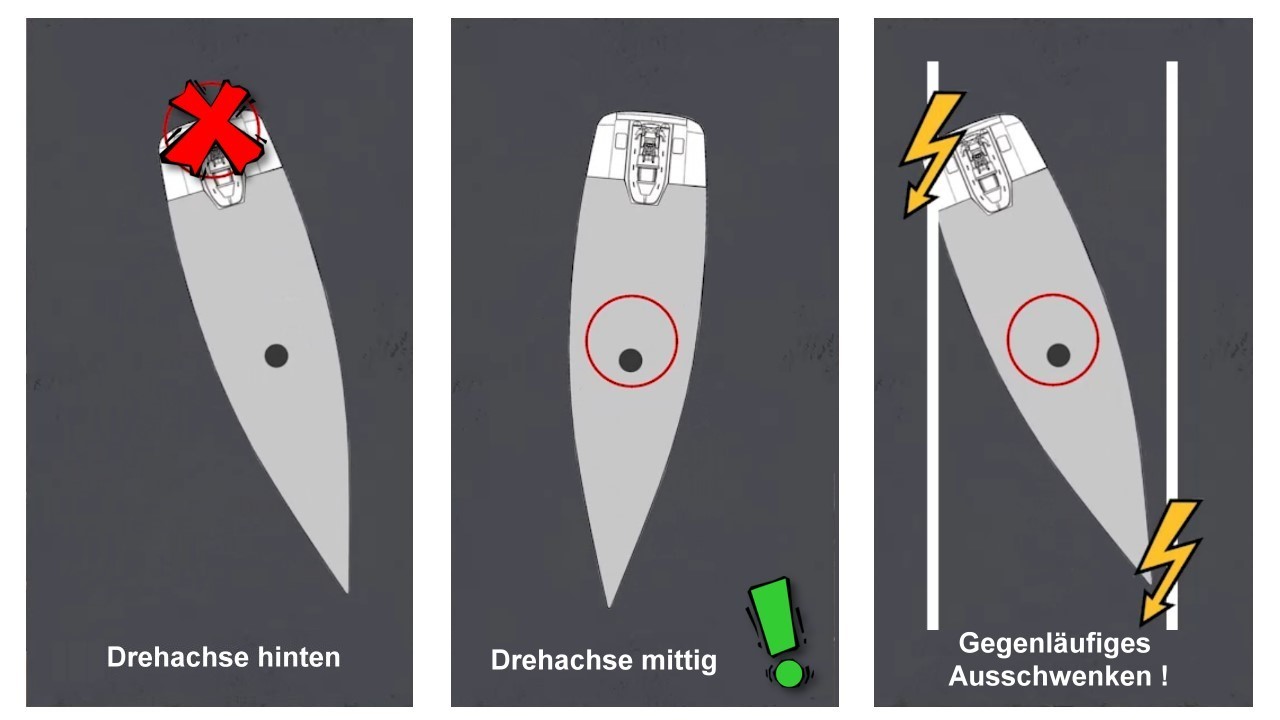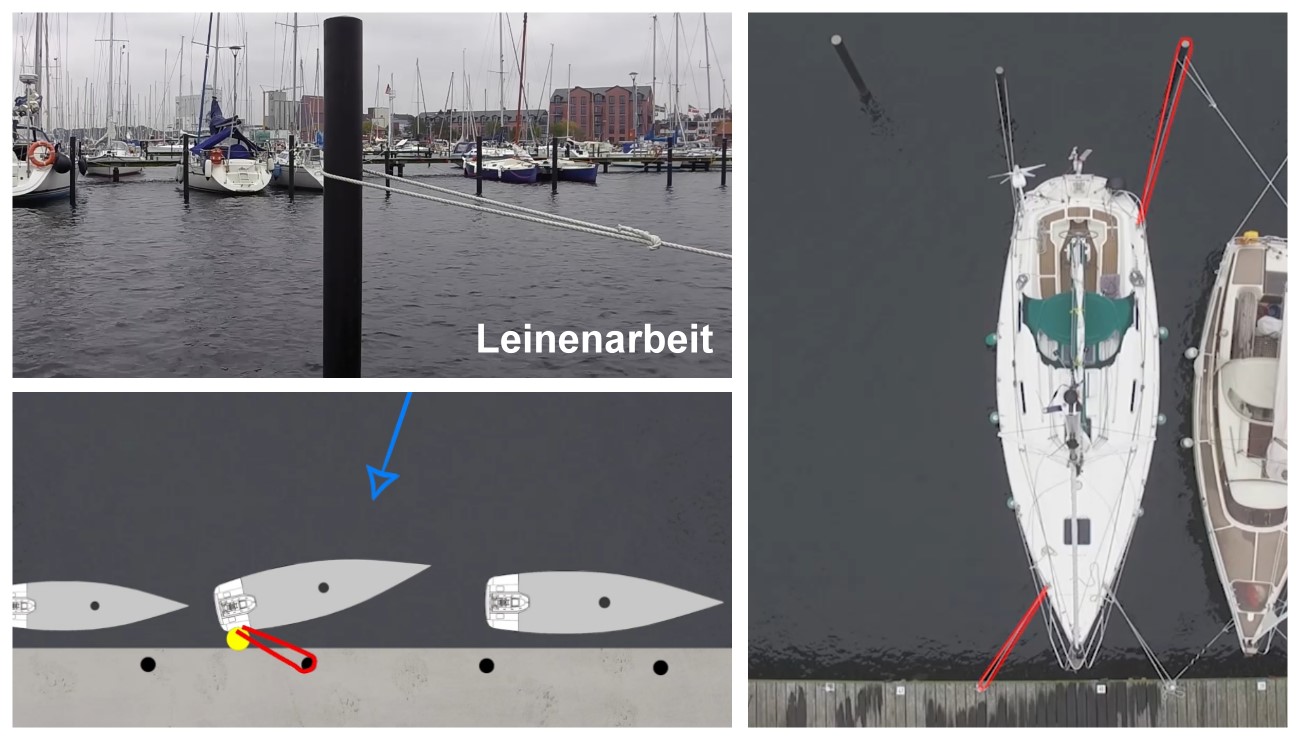Single-handed sailing and manoeuvring tips for sailing yachts
Hello and welcome to “Single-handed sailing and manoeuvring tips for sailing yachts”. My name is Guido Dwersteg. In the following sections, I will try to explain to you the absolutely essential basics of safely manoeuvring yachts. Just a few general remarks, though, before we actually start: all of the manoeuvres and procedures described herein are based essentially on my own personal experiences on the CARPE DIEM, a Bavaria 32 Holiday, which has been my travel companion since 2009. I expressly make no claim to absolute correctness or even textbook procedures. Rather, the methods presented here are a combination of the practical experience I’ve gained over the years, mistakes I’ve made and my own ideas developed over time. Hence, I cannot, and will not, offer fail-safe, catch-all solutions. What I will provide, though, are suggestions and tips to help you handle your own boat or a chartered vessel and to encourage you, above all, to try out and develop your own methods. As I keep saying: “If it works, it’s right!”. Of course, you should always obey the applicable provisions and put neither yourself nor others at risk. Also, since I travel alone in my boat most of the time, I will describe the most common manoeuvres mainly for single-handed sailing. This notwithstanding, the procedures shown here may of course also be performed by a crew – large or small – which usually makes things even easier. Well then, let’s go…
What is the origin of the term single-handed sailing?
Let’s start with a few short words on the subject of “single-handed sailing”. What is the origin of this term? Probably the most common explanation is the mariners’ safety rule, “one hand for yourself and one for the ship”, which means that all persons on board a vessel must use at least one hand for their personal safety, while operating the boat with the other hand. So, if you’re the only person on board, you will of course have to sail her “single-handedly”. Quite simple actually, like so many aspects of sailing.
On the other hand, single-handed sailing can be somewhat tricky at times, which keeps many skippers from venturing out to sea on their own in the first place. And I wasn’t any different. I sailed my first few single-handed miles on the popular Ijsselmeer lake, and I still remember how I headed out into the open water, exiting the Stavoren lock with my knees shaking and fear plaguing me. By the way, I hadn’t actually planned on doing that. There just had been too many times my girlfriend and other potential companions were not available, and I didn’t want to spend half the season hanging around the harbour by myself. I’m probably not an exception when it comes to that. So, all the more reason for me to help you overcome your primal fear of single-handed sailing. Today, setting out on my own doesn’t bother me anymore. On the contrary: I absolutely love the fact that it’s just me, my boat and nature out there. By the way, this is not meant to sound pretentious. I just want to show you that it merely takes a little practice and routine to enjoy single-handed sailing. Just try, it’s worth it!
What’s the right vessel for single-handed sailing anyway?
There isn’t really a rule of thumb, in my opinion. For single-handed sailing novices, a smaller and thus easier-to-handle boat certainly tends to be a good choice. But once you’re more experienced, you will have no problem moving boats from about 40 to 50 feet in length safely and single-handedly. This is usually not such a big deal out on the open water anyway. On the other hand, entering a harbour single-handedly is somewhat more finicky. And that’s a perfect place to start.
As to the boat herself, I don’t have any particular personal preferences. Having said that, I do find it convenient and important to have a main sheet attached to the cockpit deck, hence directly controllable, as well as a proper electric autopilot. Especially on modern cruiser yachts, the main sheet is often attached somewhere on the foredeck via a tackle. In my opinion, this not only reduces the sheet’s efficiency but also tends to negatively affect its quick and smooth operation. Moreover, a good autopilot can assist us in preparing and performing the actual manoeuvres and makes things so much easier. As for the rest of the deck equipment, such as winches, cleats and ropes, you will get the hang of most of it somehow or another. “Practice and habit make perfect” certainly applies here.
This notwithstanding, you should familiarise yourself with and/or try out the technical details and characteristics of the boat before your first single-handed cruise. For instance, consider the shape of the keel and propeller. While the design of the keel gives you a clue as to how a boat behaves at sea and especially in tight spaces, the interesting aspects of a propeller are its direction of rotation and its design. Let’s look at the keel first: nowadays, common types of yachts usually have what is called a short keel. In this case, “short” refers to the horizontal extent of the keel in relation to the overall length of the vessel. So, a short keel is relatively short in comparison to the actual length of the vessel. On the other hand, many long keelers have a keel extending over the entire length of the hull, i.e. from the bow stem to the rudder. Between these two variants, there is the medium-length keeler whose fin spans approx. half the ship’s length underwater. The pros and cons of these different types of keels would certainly fill a whole book. Probably the most important differences concern directional stability at sea and manoeuvrability in tight spaces. These two factors sort of contradict each other. This means that a short keeler stays less stably on course but is much more agile and manoeuvrable in tight spaces. On the other hand, long keelers mean high directional stability, but also slow and time-consuming turning movements in harbours. Accordingly, the medium-length keeler is exactly between the two. As mentioned before, short keelers are more common nowadays. My CARPE DIEM is also a short keeler and consequently has clear advantages over a long keeler in tight spaces. Out at sea, however, you cannot sail as close-hauled and you also feel the offset from swell and wind more clearly. It’s all a matter of preferences, of course. Personally, I prefer short keelers and have sailed on them for most of my sailing career. The direction of rotation and the design of the propeller provide clues regarding prop walk and propeller efficiency. Depending on the propeller’s direction of rotation, prop walk moves the stern one way or another, which we should of course bear in mind during our manoeuvres. Moreover, in the case of fixed propellers, you can also expect faster propeller action than, e.g. in a folding propeller. The number of blades on the propeller also plays an important role in this respect. But whatever your boat holds in store for you: familiarise yourself with her characteristics to avoid unpleasant surprises later.

What basic influences and things affect us in manoeuvres in tight spaces?
Before we start with our first manoeuvre, let’s take a moment to look at a few basic aspects of manoeuvring in tight spaces and using engine power.
How does the wind affect harbour manoeuvres?
First of all, there is the wind. Our friend out at sea, it can quickly become our enemy in the harbour. So, as you enter the harbour, you should already know the direction the wind blows from and, above all, its strength. The obligatory look at the masthead fly or at the relevant instruments, if any, certainly helps. The more often you check, the better. On the one hand, you will get a good sense of the incident breeze, and on the other hand, the angle of wind incidence often changes during manoeuvres. This may happen, for instance, if you change your heading or enter an area sheltered from the wind. Knowing at all times where the wind comes from and how strong it is can be an advantage according to the manoeuvre we’re performing. Plus, we know where the wind tends to blow our boat and where we need to allow for leeward space. Our own speed also plays an important role in connection with the wind. Not only because in strong winds we tend to require more power to manoeuvre the vessel safely and stably, but also because the wind itself affects our speed. Most of you will have experienced how headwind can slow you down, while tailwind gives you quite a push from behind. One final remark: of course, the wind also affects other vessels moving in the harbour. So, be on your toes.

How does the tide affect harbour manoeuvres?
In addition to the wind, the tide may also have perceptible effects, especially in tidal waters and rivers. Although these effects tend to be rather weak in most harbours, you should still watch out, though. For example, if the tide hits our vessel exactly from the side, we will drift off in the corresponding direction – similar to the effects of crosswind – and have to allow for the resulting leeward space. This effect will be even more marked when the wind and tide have the same direction. By the way, the keel shape (see above) is relevant here, too, because it also influences our boat’s drift.
Why should I always keep the vessel moving?
One of the essential prerequisites to manoeuvring a vessel is: motion! Only when the vessel is in motion will water flow over the rudder which can thus influence the vessel’s direction of travel. This applies, in particular, when backing down. Driving ahead, we can create a flow of water over the rudder even at very low speeds by a short, sharp forward propeller thrust, but backing down we definitely need the vessel to move. Forget about manoeuvring once she stands still. The rudder will no longer have any effect, and the wind or the tide will cause her to drift off increasingly. So, if possible, always keep the vessel moving, no matter how slowly.

How does prop walk affect my vessel?
As already mentioned before, the stern moves to one side in many vessels, depending on the propeller’s direction of rotation. This effect is called prop walk. Basically, this phenomenon is quite easy to understand. The propeller’s rotation below the vessel produces a water helix rotating around the axis of the propeller. Naturally, this helix drags water downward on one side of the vessel, while pushing it upward on the opposite side. So, this sort of creates either thrust or wake, moving the stern of the vessel in one direction or the other. By the way, the rotary direction of the propeller itself is defined according to its direction of rotation in forward gear. For example: if the propeller turns anti-clockwise in forward gear, it is called a left-handed propeller, and vice versa. The rule of thumb derived from this is: If the propeller is left-handed, the stern of the vessel will move to the left in forward gear and to the right in reverse. The opposite applies to a right-handed propeller. Again, this effect may either support or hinder our manoeuvres. For instance, when berthing alongside, we can use our knowledge about prop walk in manoeuvring such that this effect moves our vessel towards the jetty when taking all way off her. Also, when bringing her to a complete standstill in narrow fairways, you can correspondingly keep the bow ahead in order to “pull” the vessel back into a straight position via prop walk when putting her in reverse during braking. Of course, prop walk differs according to the type of vessel, the drive and the shape of the hull and keel. To get a sense of how much your vessel drifts, just run a few test manoeuvres in calm conditions and when there is sufficient space.

What effect does a vessel’s axis of rotation have?
In contrast to cars or motorcycles, for example, the hull of a vessel does not rotate about a point far back, but rather about an axis approximately in the middle of the vessel. As a result, bow and stern pivot in opposite directions when turning the vessel in a particular direction. For example: when we turn the bow to starboard, the stern will simultaneously pivot to port, and vice versa. This makes the vessel very “wide”, so that caution is required in narrow harbour passages or fairways.

How can I improve my harbour manoeuvres with good line work?
Especially in single-handed manoeuvres or trips with small crews, there is often a shortage of hands required to perform a manoeuvre safely and effectively. You can easily solve this problem by using your lines (and in many cases, your engine, too) efficiently. How to do this in individual cases, is best explained in connection with the manoeuvres explained below. I just thought I’d mention it :-). For safer and stress-free harbour manoeuvres you should also internalize another rule: all line manoeuvres should be carried out from aboard the vessel, if possible. Ideally, this means that the lines are thrown from the vessel (around a cleat or a bollard, for example), then passed back on board and fastened. Among other things, this is to keep you from leaving the vessel before she is sufficiently secured. GThis applies, in particular, to single-handed manoeuvres. Even with a small crew, you can imagine what happens if a manoeuvre goes wrong, the boat drifts away and half the crew is already on land. Not to mention the risks involved in stepping over onto a slippery jetty. Moreover, the lines are usually easier and quicker to handle when passed back on board. For instance, when casting off. Here, a line passed back to the vessel can usually be simply tossed from the vessel or at least pulled through. On the other hand, if the line is securely attached on land, one person has to get off the vessel again.

But now, let’s finally perform our first manoeuvre:
Unberthing from boxes (coming soon)
Berthing in boxes (coming soon)
Heaving to (coming soon)
Manoeuvring in the harbour (coming soon)
